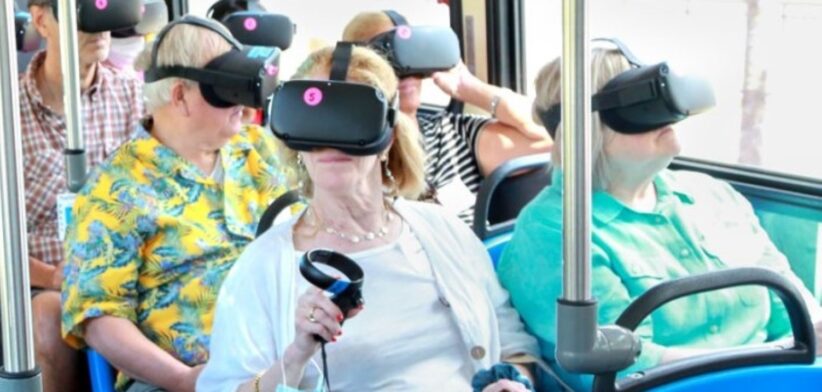A bus tour in the United States is mixing reality with the virtual world to highlight the impacts of climate change.
Passengers on a sightseeing tour in New York City’s Roosevelt Island don virtual reality headsets which blend the physical and digital worlds through a Communal eXtended-Reality (CXR) system.
Associate Professor Wendy Ju, from Cornell University, who guided the research behind the system said passengers were transported into a realm where virtual environments seamlessly merged with their real surroundings.
“Guided by audio narration, they encountered nine striking scenes depicting the escalating impacts of climate change, with a particular focus on rising floodwaters,” Associate Professor Ju said.
“In the fragmented media landscape we live in, and with differences in regional issues, the shared physical experience is a very unique way to bring people together.”
She said projections suggested that a 100-year flood could submerge most of Roosevelt Island, but despite these alarming forecasts, research indicated that such a catastrophe didn’t feel real to many in the public.
“This disconnect between knowledge and urgency is precisely what the CXR system aims to address.
“The technology – which synchronizes real-world movement with virtual overlays – provides a fully immersive, shared extended reality (XR) experience designed to foster a unified understanding of pressing challenges, such as climate change.”
Associate Professor Ju said the integration allowed participants to experience a shared reality while physically traveling through their environment, making the experience both communal and deeply rooted in place.
“One participant was even moved to tears upon seeing a simulated flood reach the steps of her school,” she said.
Associate Professor Ju said in the planning and development phase, they were warned about scaring people about flooding and climate change because people could become hopeless.
“We tried very hard to employ humor and emphasize possible interventions to mitigate this. We did find that people got worried, but we also noted that the worry seemed to galvanize people to act, which is a good outcome from our perspective.”








